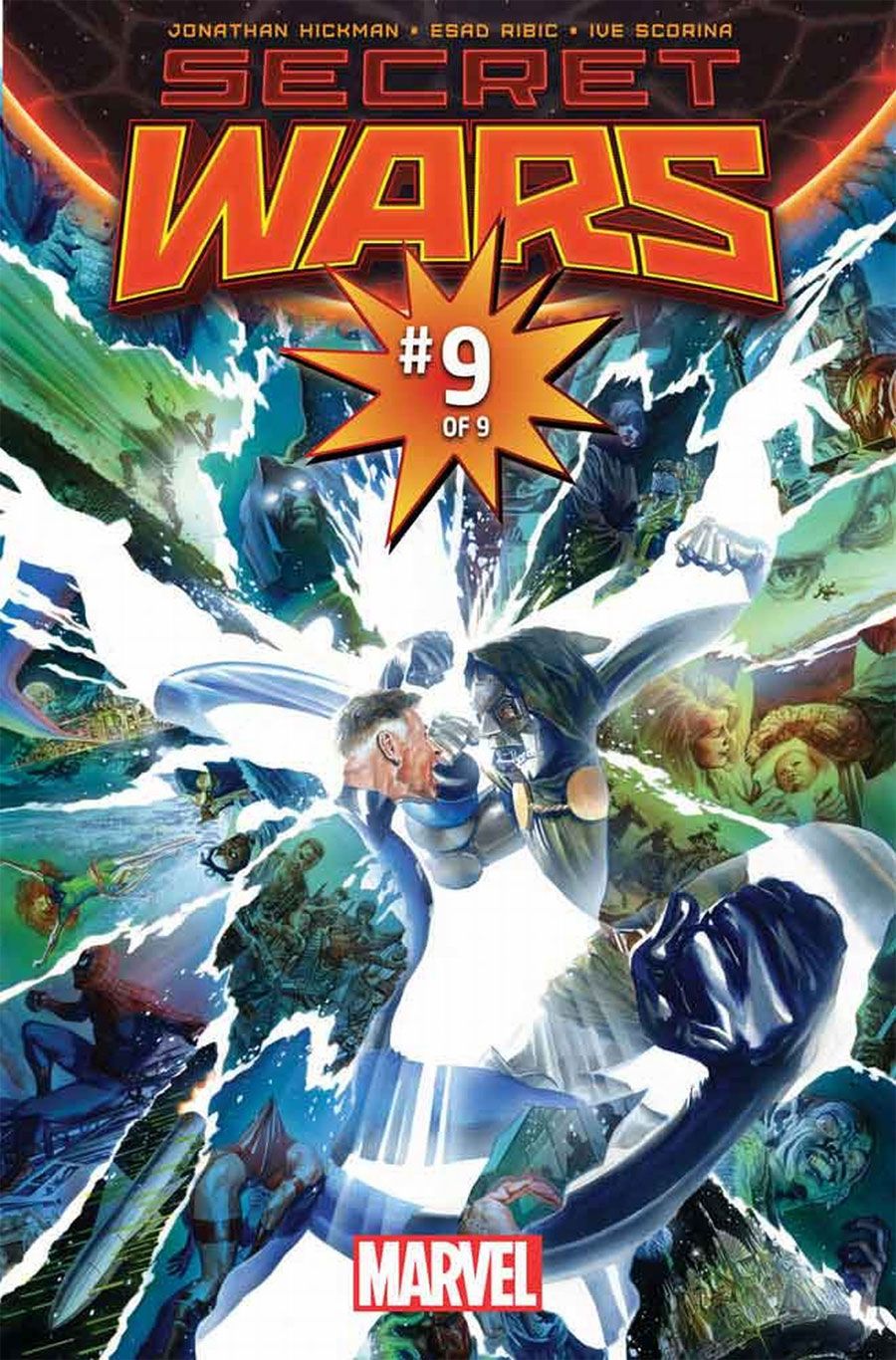Jonathan Hickman wraps up the cosmos-crossing epic he began three years ago with a surprisingly human but ultimately fitting showdown in "Secret Wars" #9. To date, Hickman's sprawling "Avengers" story has taken its toll on the series' initial cast, and this conclusion works out well by allowing each character that remains a special moment during Battleworld's final hour. While scheduling snafus resulted in a delay for this final issue, the lateness takes nothing away from Hickman's grand finale, even though some elements of it have been seen in the All-New, All-Different Marvel relaunch. Though there are no worlds left to incur and no space-spanning battles, artist Esad Ribic gives this character-driven climax a nonetheless epic treatment, making all of the various one-on-one interactions grand in their own right.
The standard cover by Alex Ross is peppered with classic key moments from decades of Marvel history, exhibiting once again why Ross is the go-to guy for momentous events such as this. Ross' cover makes no secret of the series' final fight, and -- coupled with the knowledge that Reed Richards and Victor Von Doom have the oldest rivalry in the modern Marvel Universe -- it's all too appropriate that Hickman pits them against each other for what very well might be their final confrontation. The cover image's outer fragments are iconic, and arguably so is the centerpiece, which is symbolic of not only the events inside the issue but also the fifty-plus year relationship between two fantastic foes.
RELATED: Hickman & Brevoort Discuss "Secret Wars'" End & Ushering in the New Marvel Universe
Hickman's battle between two of Marvel's biggest brains (and egos) is a study in contrasts that -- upon unfolding -- is more about a study in similarities, with one very important distinction that all but sums up the differences between the two men. These differences are explored with a surprisingly minimal amount of dialogue, save for a cleverly simple but brilliantly designed page by Ribic that explains as well as symbolizes what sets the two apart, and exactly how far apart those personas truly are. There's a kind of cinematic flair to Hickman's dialogue and pacing as well as the sequence's trademark issue design, all of which plays well throughout the comic.
Of course, before the big fight, there are a couple of undercard bouts, and these encounters are no less captivating. Doom's initial battle with another important character is a setup for Doom's final encounter with Reed, but both Hickman and Ribic treat it with the same sense of importance. The dialogue here is tight and tense, and this leadoff sequence is superbly paced and generates genuine tension, which nicely sets up the rest of the issue. Ribic brings a grand scope to this hand-to-hand battle, considering that one of these hands is the glove of a self-designated god and the other wields a different kind of super-powered gauntlet altogether. Hickman's typical big-thinking ways also play well into Reed's pre-Doom encounter with his alternate self.
As is usually necessary with event-type stories like these, Hickman caps the story off with a somewhat lengthy but important denouement, one that establishes some very critical basics that set up the circumstance for the new, post-"Secret Wars" landscape. There aren't multiple snippets of all-new, all-different characters who still look mostly the same; instead, Hickman focuses on a couple of key sets of characters, particularly one franchise that many expected to be pushed into the background. These epilogues are where colorist Ive Svorcina finally gets to stretch somewhat, after having to remain somewhat reserved throughout the issue due to the setting of Hickman's story.
The Marvel Universe has been rewritten, and Hickman and Ribic ensure that "Secret Wars" #9 leaves a large and unlimited canvas that allows for those stories to be created. Hickman's grandiose odyssey has come to a close in both a very human and very epic manner.

